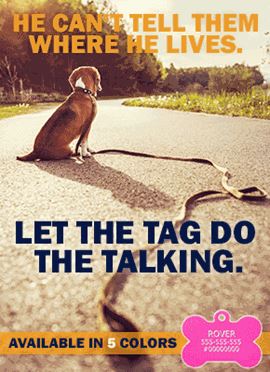The Troubleshooter is collaborative advice from CKC's team of canine enthusiasts, professionals, and trainers. For severe behavioral and/or health issues, consult a local veterinarian, professional trainer or animal behaviorist.
Dear Troubleshooter,
I am at my wit's end trying to teach my Maltese puppy to use a pee pad. She uses it in her playpen, but not downstairs
I've tried rewards and praise. She knows where she is supposed to go because sometimes she gets on the pad and stays for a couple of minutes hoping for a reward, without doing anything.
When she starts to go on the carpet, if I see her and stand up, she will run to the pad. I don't know what to do.
She was born June 5, and I have had her since she was eight weeks old. I put her on the pad about every two hours, but sometimes she will walk right off and go on the carpet. The pad is in a crate downstairs.
Can you please offer any suggestions? This is making me crazy. Thanks for any help you can offer.
Sincerely,
Pee-Pad Problems
Dear Pee-Pad Problems,
Successful training is rooted in science-based learning, and thousands of dogs have been successfully housetrained after their owners made changes to their approach based on the following factors:
Age
The first point to examine is the dog’s age: young puppies, yours included, are not born with an understanding of the "good" and "bad" areas to urinate and defecate inside your home. However, they do begin to form preferences for elimination areas as early as six to eight weeks of age. Young puppies will begin to move away from the primary nesting or whelping site to urinate or defecate.
Your puppy has been forming her preferences since the day you brought her home. Unfortunately, her idea of what’s acceptable and your idea of what’s acceptable are not the same (at least, not yet). Your puppy is just over four months old, so she should be on her way to honoring designated "potty areas" that are established by you and understood by both of you.
Supervision and Confinement
The next two factors go hand-in-hand and account for most housetraining errors. They are confinement and supervision. Only dogs that are physically/mentally mature and reliably housetrained for at least a year should be allowed free reign in any house.
Young puppies should never be allowed out of arm's reach when they are outside of a crate or playpen. This is especially true for puppy parents in the throes of house training! Puppies have tiny bladders, very short memories, and completely lack impulse control, all of which happen to be a recipe for elimination "accidents" in the house. Because of this, it is inevitable that a puppy will, at some point, have an accident while loose in the house.
Rewards
Here’s another point to consider: although you are using treats to train your pup, each time she is able to relieve herself in the wrong area, she is also being rewarded. These are natural, biological rewards, such as the immediate feeling of relief in her bladder, which removes the feelings of discomfort that come from holding it in.
Unfortunately, biological rewards will trump any reward you are offering. However, animal learning is based on conditioning, and one type of conditioning—called operant conditioning—states that that if a behavior is rewarded, it is likely to increase in intensity, frequency, and duration. This increases the chance that your puppy will, indeed, pee again (and again, and again) in that spot, and, more importantly, NOT on the pee pad.
However, this bad habit can be broken with proximity. If you are always within reach of your pup, you can prevent her from going to HER preferred potty area and put her onto the pee pad. That way, when she's on the pee pad, she will experience the natural reward of relief in the right elimination area, and you can reinforce it yourself by rewarding her AFTER the deed is done in the right place.
It also helps if you learn to recognize the signs of her elimination rituals (sniffing, squatting, spinning, etc.) and offer her ample opportunities to go to her designated potty areas (in your case, pee pads). Young puppies have somewhat of an innate elimination schedule, and adhering to that schedule to the best of your abilities will also increase your chances of success.
Many young puppies will often eliminate within 5–12 minutes after drinking, when excited (as in, when you walk through the door or during play), first thing in the morning, every hour they are awake, and before going to bed. Many will also eliminate upon a visit from another dog. So keep all of this in mind when you are trying to anticipate the next potty break.
Crate Confinement
Many puppy owners may not like they idea of putting their dogs in crates, but almost every dog expert involved in the fields of behavior or training agrees that confinement is a necessary part of reliable house training.
Confinement does not mean leaving your puppy in a crate all day or for excessive lengths of time. Instead, it means your pup is safe and has plenty of pee pads available while you are cooking, catching up on Netflix, or doing anything else around the house. Then, once you’ve finished what you are doing and can watch your pup's every move, you can take him out to play while watching for elimination behaviors, discouraging or correcting selection of bad potty areas, and rewarding selection of good potty spots.
The reality is that simple confinement during the potty-training phase has saved many a dog from being surrendered to a shelter, many a sofa from being eaten, and many a carpet from being christened once the pup's human is out of sight. Also, confinement during the housetraining stage results in freedom once the puppy becomes a trusted an adult.
Remember, the purpose of confinement is to prevent a puppy (or dog) from eliminating in places he or she shouldn’t, getting into things that are dangerous, and destroying your stuff. It also conveniently keeps the puppy in the desired potty areas.
Here is a suggested regimen for getting your pup back on the housetraining track:
- Start keeping her within arm's length when you are playing with her and letting her out. Try using a tether.
- Cover her confinement area with pee pads so that she's used to peeing on them when confined.
- Thoroughly clean and deodorize the carpet where she prefers to eliminate (the smell of urine triggers dogs to urinate, and even if you can't smell it, she can). Block her access to that area, OR cover the entire area with pee pads.
- Place more pee pads in more places outside of her confinement area. Reward her ONLY for urinating or defecating on the pee pads.
- Confine her to her safe place when your eyes cannot be on her at all times.
Good luck and happy training!
The Troubleshooter
Do you have a doggy dilemma? Toss your toughest questions to [email protected] (Subject: Troubleshoot) and we'll fetch our best troubleshooting advice.













